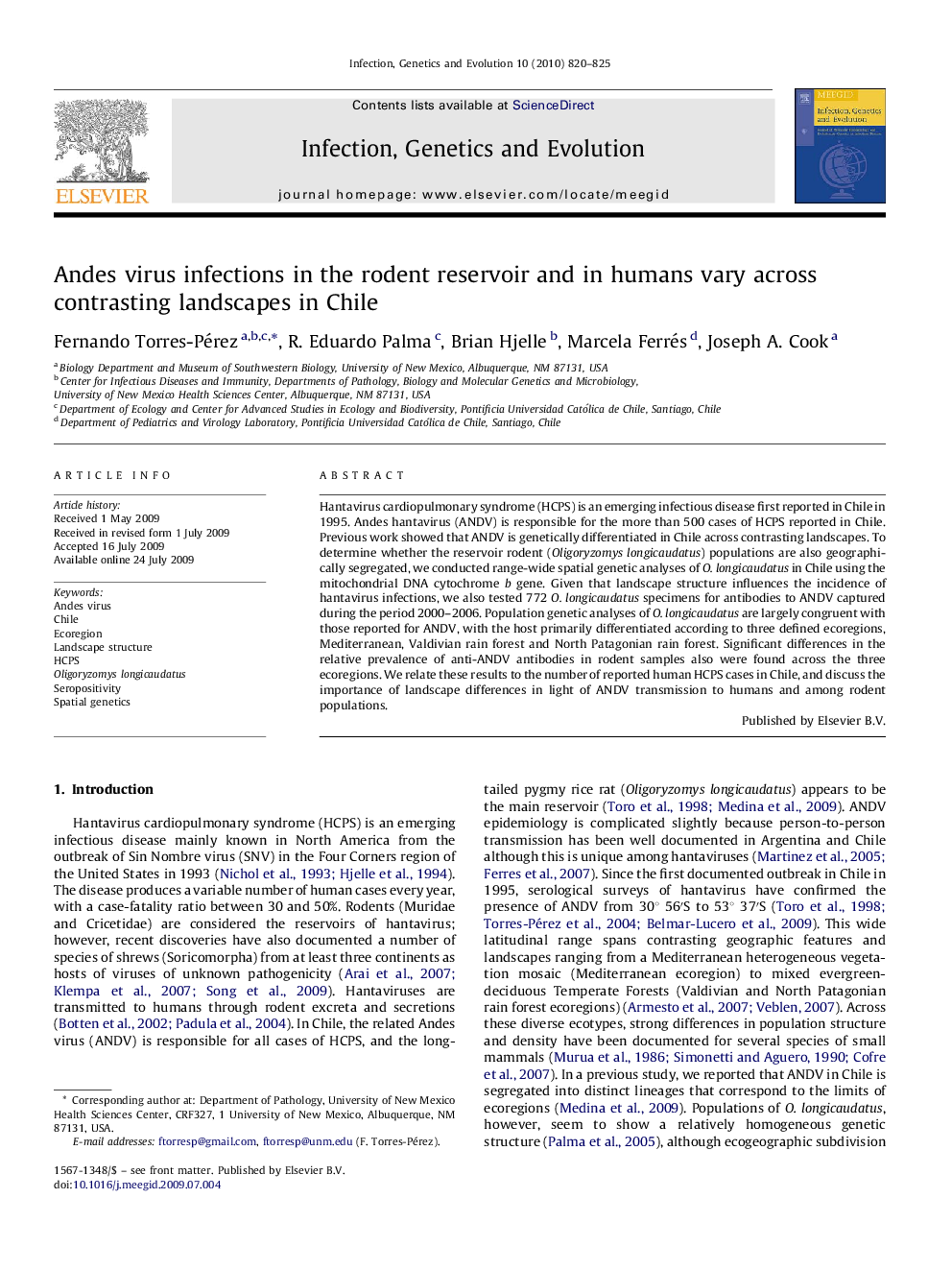| Article ID | Journal | Published Year | Pages | File Type |
|---|---|---|---|---|
| 2823182 | Infection, Genetics and Evolution | 2010 | 6 Pages |
Hantavirus cardiopulmonary syndrome (HCPS) is an emerging infectious disease first reported in Chile in 1995. Andes hantavirus (ANDV) is responsible for the more than 500 cases of HCPS reported in Chile. Previous work showed that ANDV is genetically differentiated in Chile across contrasting landscapes. To determine whether the reservoir rodent (Oligoryzomys longicaudatus) populations are also geographically segregated, we conducted range-wide spatial genetic analyses of O. longicaudatus in Chile using the mitochondrial DNA cytochrome b gene. Given that landscape structure influences the incidence of hantavirus infections, we also tested 772 O. longicaudatus specimens for antibodies to ANDV captured during the period 2000–2006. Population genetic analyses of O. longicaudatus are largely congruent with those reported for ANDV, with the host primarily differentiated according to three defined ecoregions, Mediterranean, Valdivian rain forest and North Patagonian rain forest. Significant differences in the relative prevalence of anti-ANDV antibodies in rodent samples also were found across the three ecoregions. We relate these results to the number of reported human HCPS cases in Chile, and discuss the importance of landscape differences in light of ANDV transmission to humans and among rodent populations.
